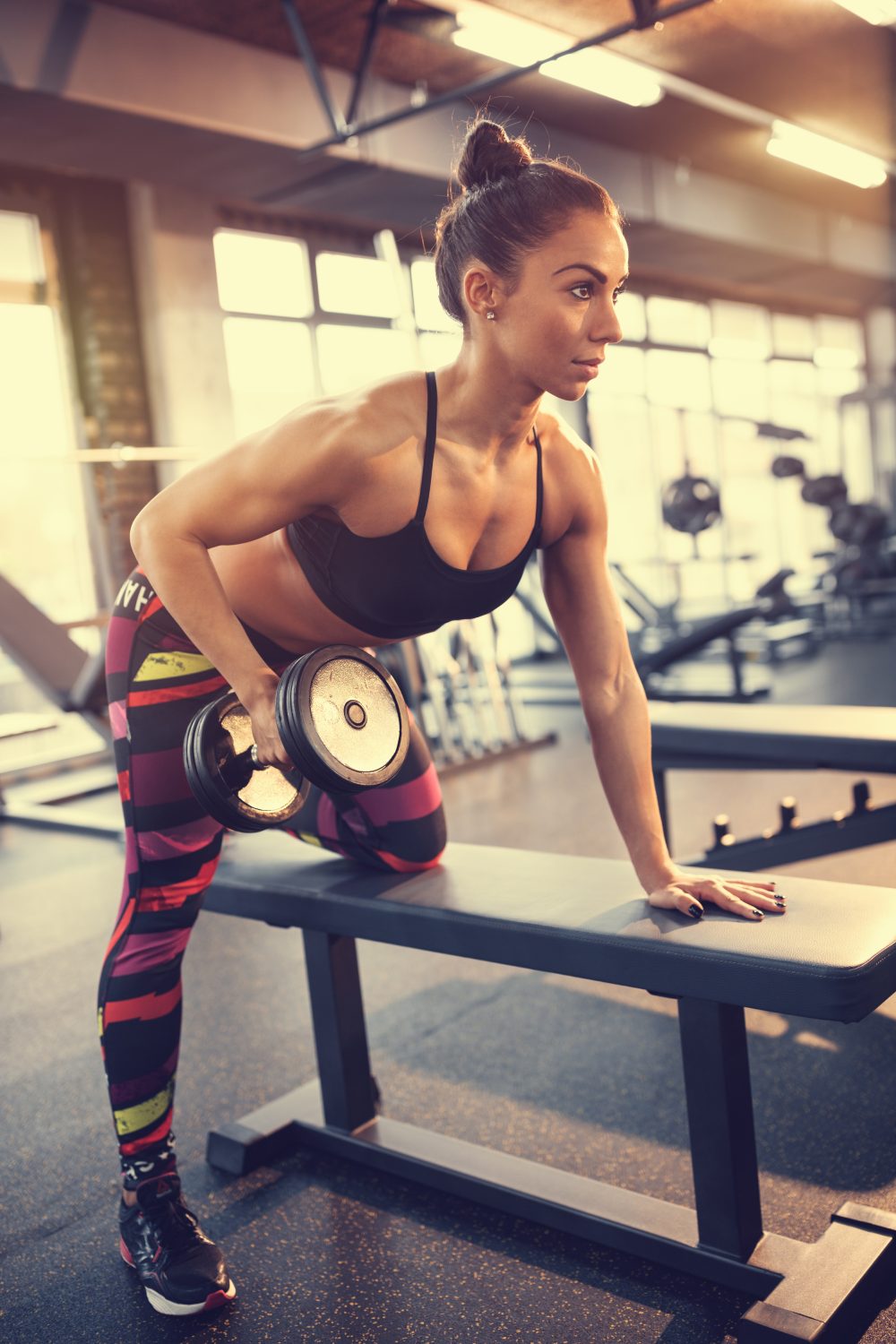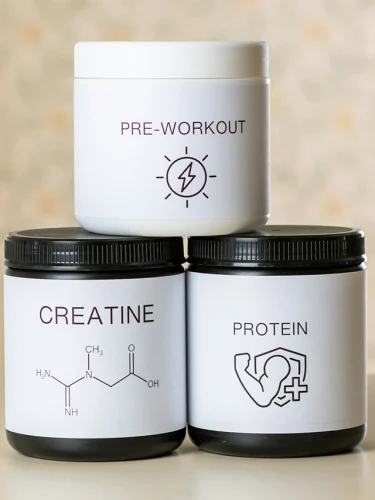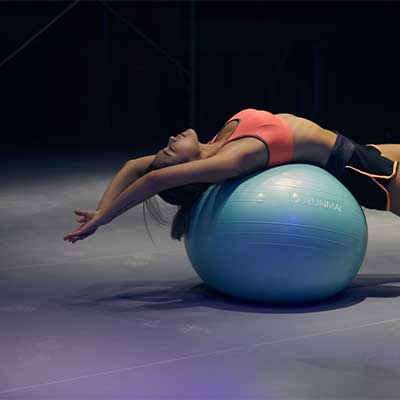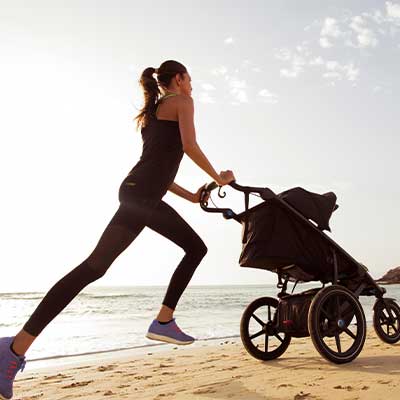Last Updated on February 16, 2025
What’s the first thing that pops into your head when you hear someone say they want to get stronger and build muscle? Yep, you guessed it, resistance training, which can be in different forms, such as lifting your own body weight, training with elastic bands, or going to the gym to lift weights. This article will discuss the go-to exercises you should do to get the most bang for your buck in the gym.
Key Components on How to Get Stronger
To simplify things, there are two key components to building strength, the first is choosing compound movements over isolation movements, and the second is progressive overload.
Compound Movements
A compound lift is a multi-joint exercise, meaning you’re recruiting more than one muscle group. A perfect example is a squat, which involves the knee and hip joints and recruits your quads, glutes, hamstrings, calves, and core as opposed to a standing biceps curl, which only involves the elbow joint and activates the biceps brachii.
Progressive Overload
As for progressive overload, it’s a method of strength training that advocates for the gradual increase of the stress placed upon the musculoskeletal system and nervous system. In simpler words, adding more weight, more reps, sets, etc.
Applying this principle to compounds is easier because of the nature of the exercises and the multiple muscles being used. For example, it is much easier to add 10 lbs to your squat or deadlift than to your biceps curl.
Exercise Selection
Which exercises should you perform to reap the maximum muscle strength benefits?
Let’s take each movement pattern separately. We have the push muscles, the pull muscles, and the legs. In our previous article “the best three-day workout split”, I explained thoroughly why these muscles are grouped together and how to target them. So we’d recommend reading that too to have a better understanding and approach to programming your workouts. Use the following exercise guidelines to better understand each movement and make sure you are doing them correctly.
Horizontal Push (AKA the Bench Press)
The major muscle groups involved are the pectoral muscles, anterior deltoid, and triceps.
- When you lay on the bench, make sure the bar is at eye level.
- Your shoulder blades should be retracted (upper back point of contact with the bench). A slight arch is acceptable.
- Keep your lats engaged to maintain rigidity.
- Make sure your feet are tucked back.
- Do not elevate your hips off of the bench when pressing.
If you lack the requisite upper body strength to press the empty bar (45 lbs), you can substitute the bench press with dumbbell presses and pick a weight that suits you and start from there.
Your body positioning on the bench should be similar to that of the bench press, just make sure to tuck in your elbows while performing DB presses to avoid any shoulder pain/discomfort and possible injuries.
Vertical Push (AKA the Barbell Overhead Press)
The muscles being used in the barbell overhead press (OHP) involve the anterior and side deltoid, triceps, and core.
- First, grab the bar slightly wider than shoulder-width (thumbs next to your shoulders).
- Be sure to keep your chest up and core engaged.
- Keep your elbows in front of you (in the scapular plane).
- Do not flare out your elbows for this exercise.
- Maintain soft knees when doing this.
- Last, press upward, and try to maintain a straight bar path.
Lower Body, Posterior Chain (AKA The Deadlift)
The main muscle groups being worked in this exercise are the hamstrings, glutes, spinal erectors, upper back (traps), and core.
- In the starting position, the bar is at mid-foot level, close to the shins. Keep your feet about hip-width apart.
- You will bend at the hips, throw your glutes back till your hands pass your knees, then slightly bend the knees to finish the descent (don’t drive your knees forward).
- Once you grip the bar, retract your scapula while engaging the lats and core muscles.
- Turn on your glutes, keep your knees out, and push against the floor with your legs.
- Once the bar is below the knee while ascending, finish off the movement with hip extension and squeeze your glutes at the end range.
Lower Body, Anterior Chain (AKA The Squat)
The muscle groups involved in this exercise are the quadriceps, hamstrings, glutes, calves, and core.
- First, you will re-rack the bar, and take a step back.
- You’ll need to find a stance you’re that is comfortable, with your feet shoulder-width apart for most people or slightly wider.
- Take in a big belly full of air and brace your core.
- Turn on your glutes.
- Make sure your weight is evenly distributed on your foot, and not just the heel or ball of the foot (tripod effect).
- You should start to descend slowly until your thigh is parallel with the floor.
- Last, you will push off your foot and squeeze your glutes going up.
Horizontal Pull (AKA Bent Over Rows)
The muscle groups you’ll be using in this exercise are the lats, rhomboids, traps, spinal erectors, and the biceps brachii as a secondary muscle.
- You can use a pronated or supinated grip for this exercise (I would recommend a pronated grip for better lat recruitment).
- I like to use a slightly wider than shoulder-width grip.
- Make sure to keep your chest up while your core and glutes are engaged.
- You’ll bend at the hips, torso at about 45 degrees with a slight knee bend, and focus on retracting and protracting the scapula. Don’t just let your arms do the movement.
Vertical Pull (AKA Lat Pulldowns)
The muscle groups in this exercise involve the lats, rhomboids, mid/lower traps, and biceps brachii.
- First, you will adjust the seat to your height.
- Next, grip the bar with a wider than a shoulder-width pronated grip (knuckles up).
- For this exercise, a slight backward lean is acceptable.
- You’ll bring the bar down to chin level, right above your upper chest by focusing on retracting the scapula (squeezing shoulder blades together). Keep your core engaged.
- Make sure to control the weight on the ascent and repeat.
Approaching Lifts on How to Get Stronger
Now that we have established which exercises are superior in terms of strength and muscle gain, how should you approach these lifts?
Start with Less Weight, Master the Technique, and Have Proper Exercise Execution
During the initial stages of lifting, I would encourage you to use a low/moderate load, master technique, and proper exercise execution. Remember that an exercise is only efficient if performed properly.
Start off by performing three sets of 10-12 reps for each exercise. Our bodies learn via repetitions, so do well-executed, slow tempo reps and REPEAT. As you progress and get stronger with the lighter weight, you can add an additional set or add more weight to the bar.
Need I remind you of the importance of properly warming up your joints and the working muscle prior to starting your lifts? You should perform a few sets of shoulder internal/external rotations on a cable prior to upper body movements and some dynamic stretches for your lower body.
Somewhere down the line in your fitness journey, if/when you feel you have plateaued in the lifts mentioned above and can’t seem to lift any more weight, adding isolation exercises to your routine can help. Individually developing the synergistic muscles used in the big lifts by performing isolation exercises will help you break through plateaus.
Nutrition and Sleep
Other very important and often overlooked components to gaining strength and building muscle are nutrition and sleep! Don’t think of your food as just a tasty treat. Consider your diet as the fuel for your workouts and recovery. I’m sure many of you’ve heard the saying ‘you can’t outwork a bad diet’. What you do in the gym is only half the equation, and what you do outside is just as important, if not more.
Make sure to have enough protein in your diet to stimulate muscle growth (at least a gram/pound of body weight), enough carbs to supply energy for those taxing workouts, and enough healthy fats to promote optimal hormonal levels and bodily function. In addition to dialing in your diet, make sure to get at least seven hours of sleep to ensure optimal recovery and avoid overtraining.
3 Amazing Set Activewear Brand Picks for the Summer
We all know that moving our bodies is ideal for our wellness, but sometimes we want…
A Beginner’s Guide to Creatine Gummies: Empowering Wellness
In the pursuit of optimal health and fitness, individuals often seek effective strategies to enhance…
Core Ball Exercises: 5 Creative Ways You Can Tone Your Stomach Effectively
If you want to lose belly fat and tone your stomach muscles, there are plenty…
8 Common Fitness Myths: Unveiling the Truth Behind Exercise Misconceptions
Unveiling the Truth Behind Exercise Misconceptions! The world of fitness has many dos and don’ts….
9 Healthy Postpartum Diet Tips for Post-Pregnancy Weight Loss
Having a baby and becoming a mother are some of the most amazing experiences that…
8 Highly Effective Ab Workouts Using Just Your Body Weight
With summer around the corner, a goal for fitness enthusiasts and beginners alike is to…
Andre is a strength and conditioning coach/personal trainer with over 9 years of experience in the field. His methodology is "Assess. Correct. Train".
- This author does not have any more posts.







